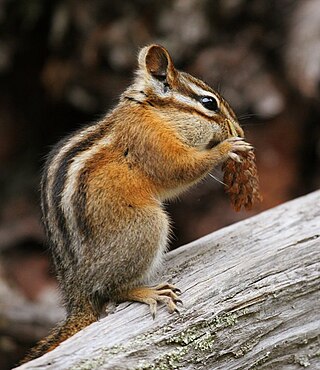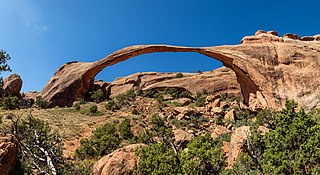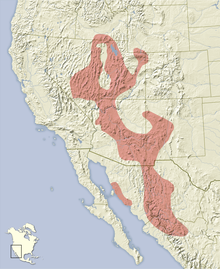
Chipmunks are small, striped rodents of Sciuridae, the squirrel family; specifically, they are ground squirrels (Marmotini). Chipmunks are found in North America, with the exception of the Siberian chipmunk which is found primarily in Asia.

The least chipmunk is the smallest species of chipmunk and the most widespread in North America.

The Hopi chipmunk, Neotamias rufus, is a small chipmunk found in Colorado, Utah and Arizona in the southwestern United States. It was previously grouped with the Colorado chipmunk, T. quadrivittatus. This species is listed as "Least Concern" on the IUCN Red List as it is common, widespread, and without any major threats. It was last evaluated in 2016.

The gray-footed chipmunk is a terrestrial and forest-dwelling species of chipmunk and rodent in the family Sciuridae. It is endemic to New Mexico and in the Sierra Diablo and Guadalupe Mountains in the Trans-Pecos region of Texas in the United States. Its natural habitat are coniferous forests. First discovered in 1902, they are distinguished by the unique gray dorsal colouring on the hind feet, hence the common name. They demonstrate sexual dimorphism, and the female is larger than the male.

The gray-collared chipmunk is a species of rodent in the family Sciuridae. It is endemic to Arizona and New Mexico in the United States.

Palmer's chipmunk is a species of rodent in the family Sciuridae, endemic to Nevada. Its natural habitat is temperate forests. It is threatened by habitat loss. It is named after Theodore Sherman Palmer, an American botanist and zoologist.

The Panamint chipmunk is a species of rodent in the squirrel family, Sciuridae. It is endemic to desert mountain areas of southeast California and southwest Nevada in the United States.

The Colorado chipmunk is a species of chipmunk in the squirrel family Sciuridae. It is endemic to Colorado, Utah, Arizona and New Mexico in the United States.

The Lodgepole chipmunk is a species of rodent in the family Sciuridae. It is found in the U.S. state of California at elevations from 1,500 to 3,000 metres. The Lodgepole chipmunk has a variety of common names including: Tahoe chipmunk, Sequoia chipmunk, Mt. Pinos chipmunk, and San Bernardino chipmunk.

The Uinta chipmunk or hidden forest chipmunk, is a species of chipmunk in the family Sciuridae. It is endemic to the United States. Formerly known as Tamias umbrinus, phylogenetic studies have shown it to be sufficiently distinct from the eastern chipmunk as to be placed in a separate genus, Neotamias. The same studies have also suggested that Palmer's chipmunk may actually be a subspecies of Uinta chipmunk, although the two are still generally regarded as separate species.

Neotamias is a genus of chipmunks within the tribe Marmotini of the squirrel family. It contains 23 species, which mostly occur in western North America. Along with Eutamias, this genus is often considered a subgenus of Tamias.

The pinyon jay is a species of jay, and is the only member of the genus Gymnorhinus. Native to Western North America, the species ranges from central Oregon to northern Baja California, and eastward as far as western Oklahoma, though wanderers are often sighted beyond this range. It is typically found within foothills, especially where pinyon pines occur.

The Colorado Plateau shrublands is an ecoregion of deserts and xeric shrublands in the Western United States.
















